You’re going nowhere without an affiliate marketing strategy.
This is the same idea behind creating a business plan. It provides an outline, a way to track efforts, and keeps you aligned with goals.
The affiliate strategy defines all aspects of your work from its content to promotions.
Consider this the affiliate strategy guide as your checklist.
What is Affiliate Marketing?
Affiliate marketing is promoting other people’s products in exchange for a commission. It’s no different from referral programs, or word-of-mouth marketing, with the exception that you’re getting paid.
Being an affiliate marketer is thrilling because you’re unbound – you can:
- Start new projects from whatever catches your interest
- Challenge big brands in their market, while staying agile and lean
- Keep costs low as a one-person operation, using inexpensive tools
We go into the finer details of this business model in our overview (if you’re interested).
There’s a routine to affiliate marketing:
- Research, find a niche, and pick great products
- Join an affiliate program or affiliate network (see our directory)
- Setup a platform like a blog or a strong social following
- Place affiliate links (strategically) on your platforms
- Drive as much quality traffic as you can to these money pages
This covers the basics and presents this opportunity to make money online by creating content about things you love. Or, what’s interesting to you (via experience and research). It takes a while since sales rely on traffic & conversions – so stick with it!
Three other things:
- Only promote products you personally recommend or have used
- Always adapt to trends and what your audience wants
- Practice White Hat SEO and outreach to create sustainability
Congratulations! You’ve now shifted your mindset from a site owner to an affiliate marketer.
The Best Affiliate Marketing Strategies (of 2018)
This is where things require real effort.
There’s more to affiliate marketing than slapping affiliate links across your website. How you place and promote them is very important. This is the underlying effort behind creating an affiliate strategy.
Here are the current, top 8 affiliate marketing techniques:
- Writing Reviews
- Email Marketing
- Coupons & Deals
- Video Content
- Webinars & Streaming
- Partnerships
- Product Launches
- Advertising Campaigns
Some of these strategies create passive income opportunities. Others require finesse and real-time efforts as you entertain an audience. These are effective for beginners and veterans. Master them and you’ll create multiple streams of affiliate income.
Let’s dig into these strategies for 2018.
1. Writing Reviews
Think of the review as the vehicle getting you to the referral commission. These wrap around the affiliate link while providing great value to readers. It’s about turning reviews – what you probably do already – into money-making pages.
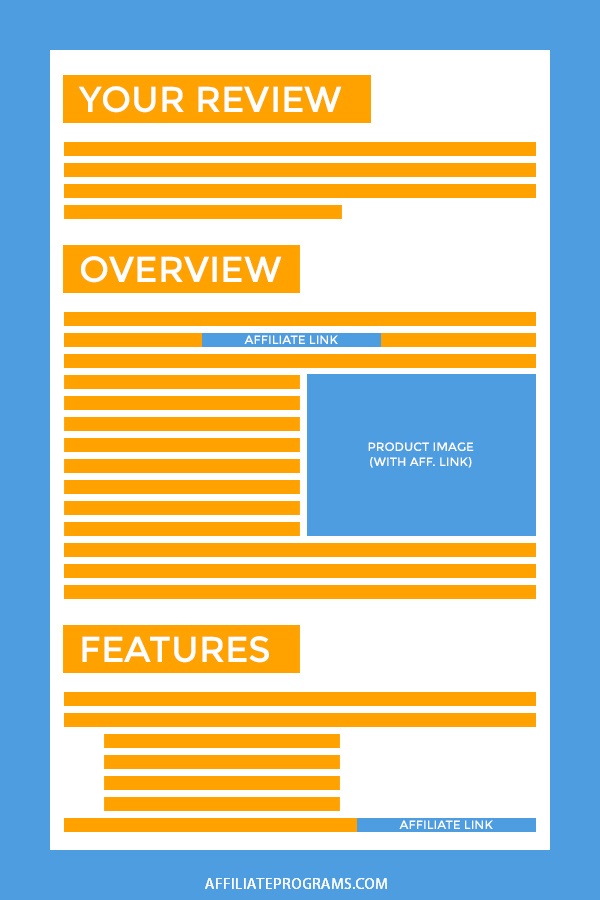
Think of product reviews like your site’s product.
This is the value you’re sharing with the community. Thinking of it as a product motivates your willingness to promote it versus moving on to the next piece of content. You’re tireless in your promotional efforts because this is a flagship piece making you money.
Do it: How to Make Money with Product Reviews
You could add these by reviewing the products and services you currently use. Or, create reviews buying it so you’re offering intimate details. It’s possible to review products you don’t own through extensive research and using trial offers, too.
Affiliate review tips:
- Pick products or services your audience could appreciate
- Create an incredibly detailed review, covering all its features, benefits, and usage
- Include lots of media since people want to visualize their projected experience
You could create entirely new affiliate sites harboring these reviews. Or, place them on your current blog/website/social if they’re fitting. Else, try using popular platforms like Medium or guest posting on relevant review blogs (allowing affiliate links) to get it out there.
2. Email Marketing
An email list is one of the first items you’ll want to build as an affiliate marketer. This list gives you instant access to followers having “voted” they appreciate your content and recommendations.
An email list:
- Drive traffic & sales
- Weathers traffic/listing drops
You should see your email list as an extension of your blog – its own platform. This platform is like an exclusive membership for the die-hard fans of your brand. Treat it with care, share great, exclusive info with subscribers, and you’ll have created a profitable email list!
In affiliate marketing, there’s the idea of the affiliate email funnel – looks like this:
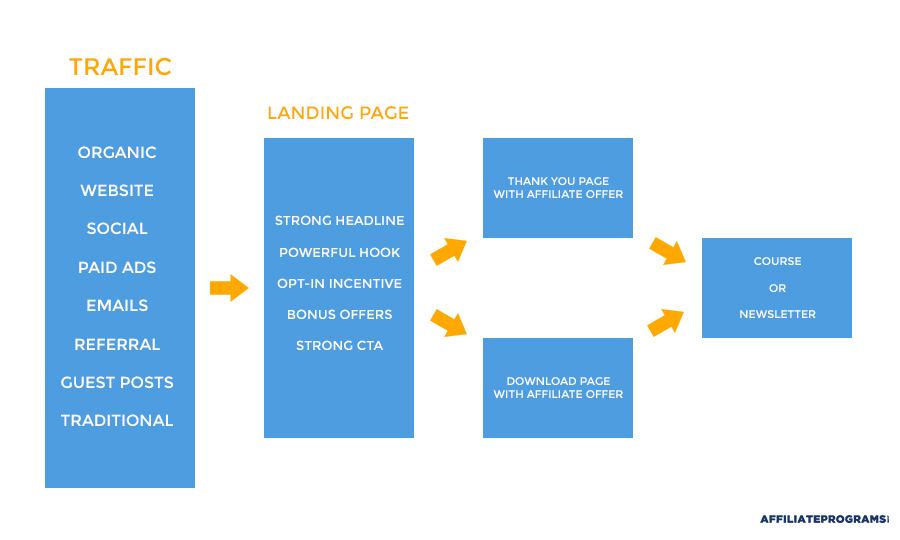
The sequence usually details:
- Email #0: The welcome email sharing what they can expect & who you are
- Email #1: The email kicking off the list, delivering a goodie or best-of list
- Email #2: The follow-up usually kicks off a series or a weekly update
- Email #3a: The email working to promote an affiliate product (i.e. review page)
- Email #3b: The follow-up to A) those that responded, or B) those that didn’t
- Email #4: The transition back into the normal, routine email drops
You’ll funnel people from your website, social media accounts, and other third-party platforms (like YouTube, forums, and comments) to a landing page. This landing page further qualifies followers by sharing details but subtly pushing back on those who aren’t likely responsive.
You’ll drive people to targeted money pages from your email list because many programs restrict “offline” promotions. Technically, email falls under this category. Plus, it’s usually easier to sell a product when you have more room to share details and media via your site.
Do it: The Beginners Guide to Profitable Email Lists
3. Coupons & Deals
Most, reputable affiliate programs offer coupons and deals exclusive to their affiliates. These are bonus incentives affiliates may use to boost conversion rates. Because who doesn’t love a discount or deal?
Why coupons work:
- People regularly search for “X + Coupons” letting you appear in the search
- It gives you an easy way to update old posts making them relevant again
Why deals work:
- Deep discounts attract customers otherwise cut off by financial barriers
- It gives you something quick & easy to promote, leveraging scarcity
You’ll find coupons in the back of the affiliate program usually listed under resources or displayed alongside your affiliate link. Alternatively, you could contact your affiliate manager and ask if you could get a coupon for your community. This works if you’ve shown good performance in the program.
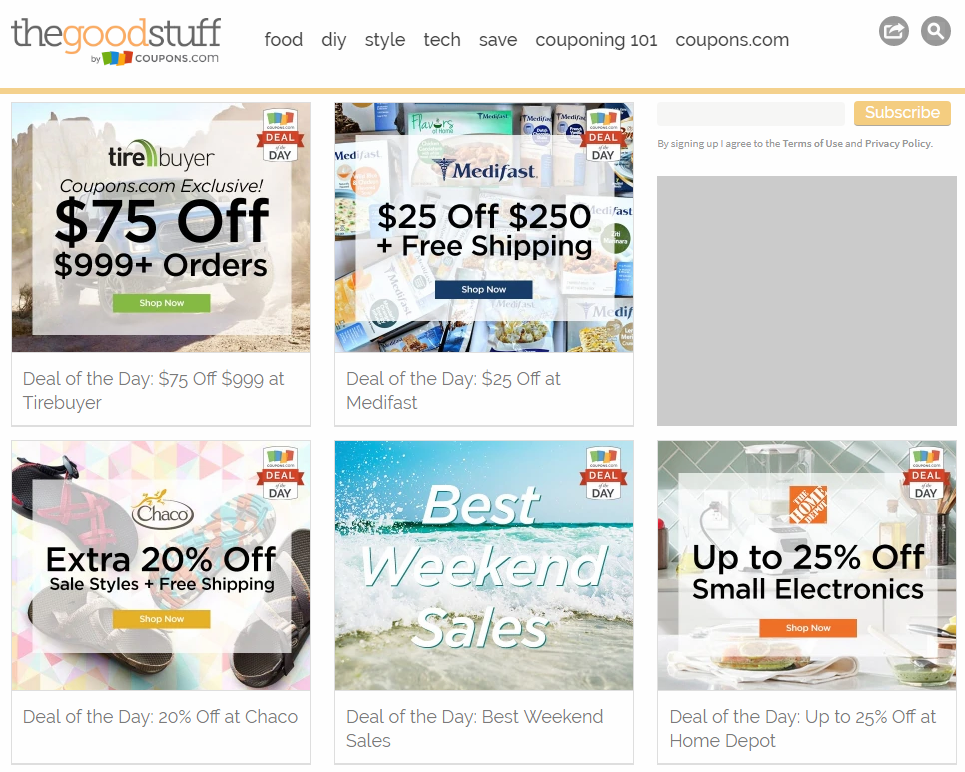
See: Our Coupons Affiliate Directory
You’ll get alerts for new deals from affiliate managers. Sometimes this includes promotions and events paired with coupons. Else, keep checking the site or newsletter for when a deal is happening – then include that by updating the post, or sending an alert to your followers.
You could also create a deals section for your website, collecting the best, curated deals in your industry.
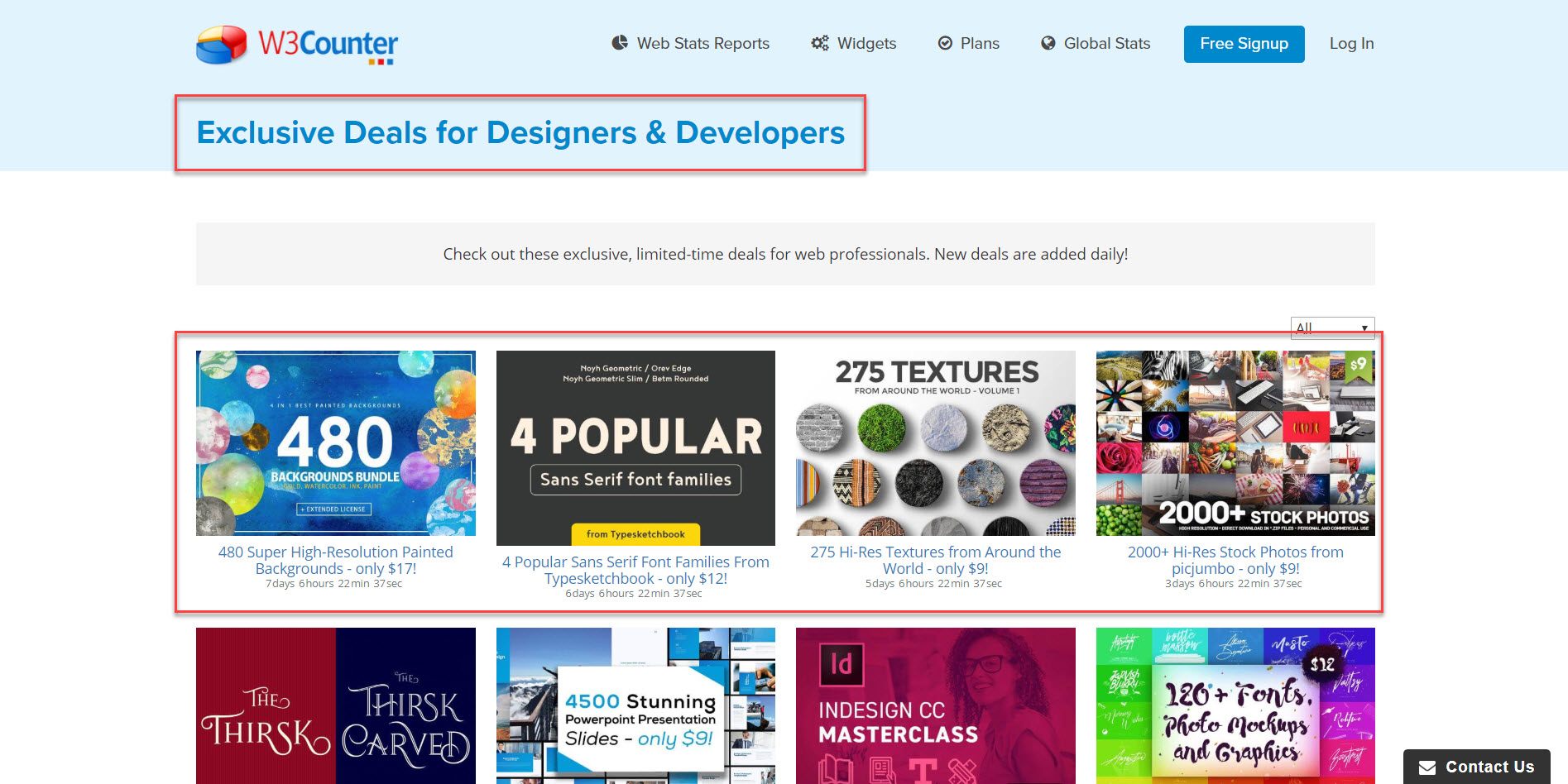
You could also partner with CPA affiliate programs to find one-off deals. Or, sign up for a deals website’s in-house affiliate program. Do a search for “(Your Industry) Deals + Affiliate Program” and see what’s available!
4. Video Content
Videos will continue to be one of the dominant content formats. You need to get on board with video marketing, especially since 81% of businesses are now using it with their campaigns.
Video content is the perfect vehicle for delivering affiliate promotions – in a few ways:
- It lets viewers see (and hear) the product, creating an emotional attachment
- You can inject personal branding to help differentiate your promotions from others
- It gets picked up on YouTube and indexed in Google, creating more traffic
- You can embed it on your website to add more value to existing content
- A video is easy to make once you understand the video creation basics, saving time
Have trouble writing thousands of words for a product review? Try video.
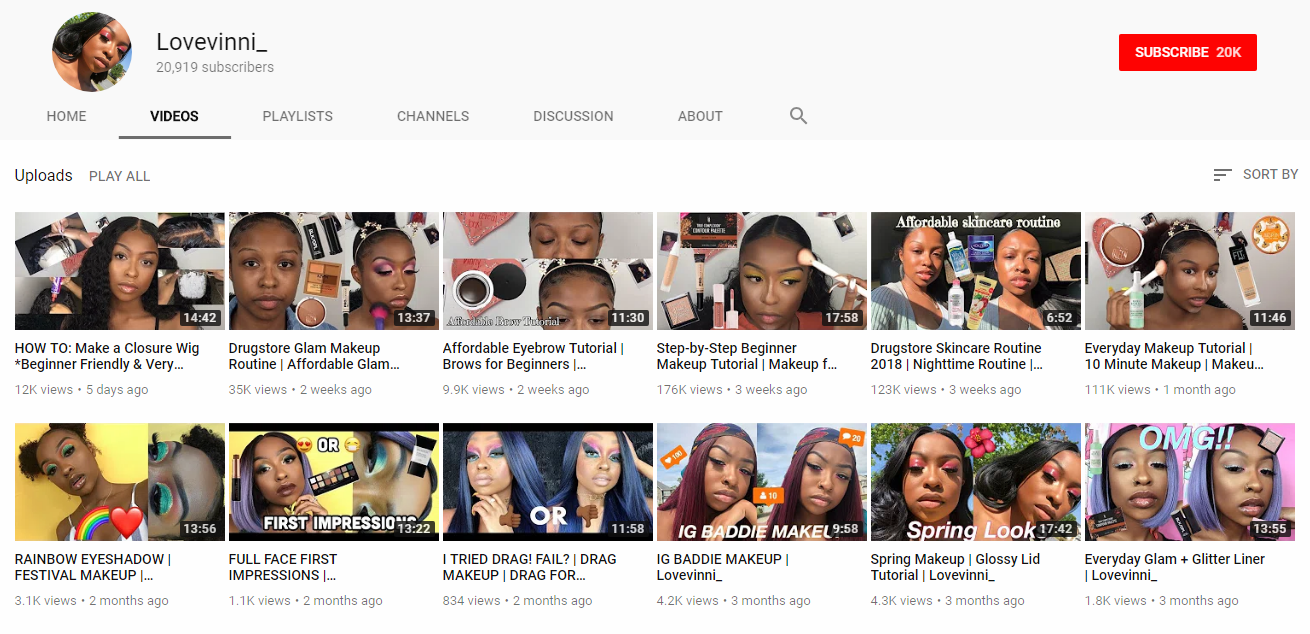
You’ll follow the same content types with video:
- Reviews
- Roundups
- Case Studies
- Interviews
- Tips & Tricks
The only real difference is you’re on camera, letting people connect with you and the message. If you’re shy, you could also do Screencasting in which you record your screen (perfect for software promotions).
You have the tools to create a video, already:
- Smartphone camera
- Free editing tools in your OS or online tools
Or:
- Camtasia Screen Recording
- Open Broadcast Software
The first few videos will be amateur, but you’ll get better the more you practice and create! We bet you’ll likely prefer to create video versus writing.
Do it: The Beginner’s Guide to Video Production
5. Webinars & Streaming
Here’s what really happens with webinars and streaming:
- Everyone gets invited regardless if there are “limited seats”
- The presenter takes users through an interesting topic, sharing details
- The presentation ends with product or service pitches
Webinars and streaming tutorials/Q&A are just sales presentations. If the person intended to share everything then they’d have done a video post or written content.
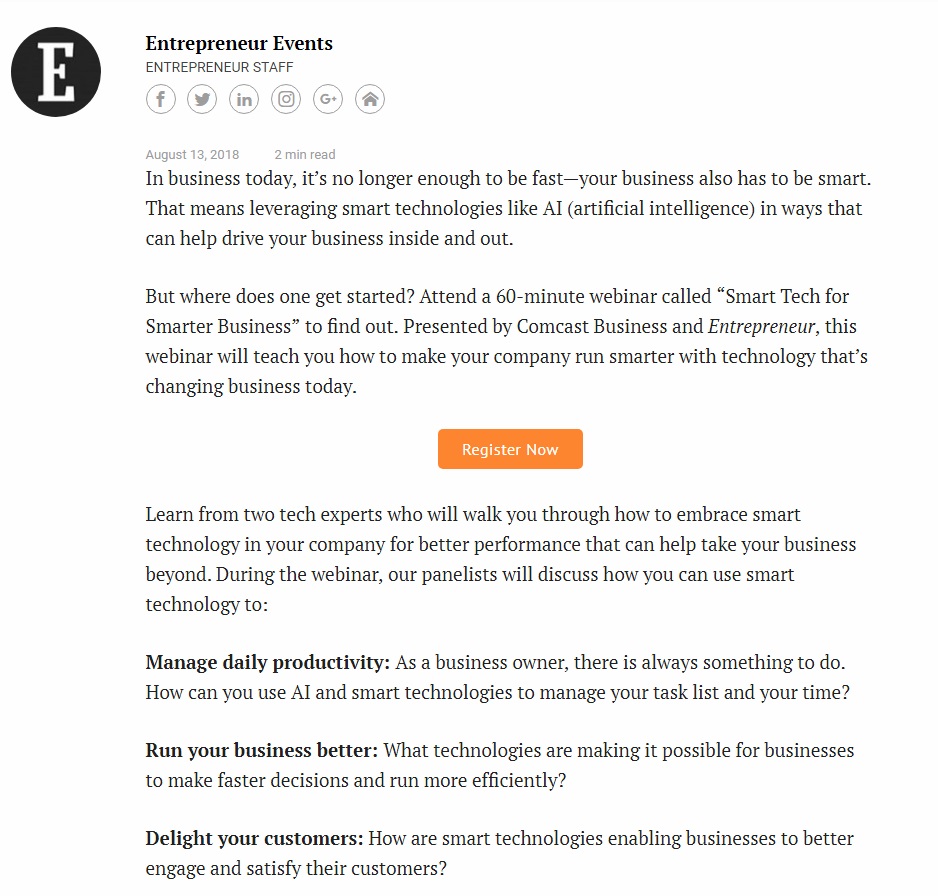
Feeling a bit scorned because you’ve been on these streams? Don’t be, use them.
Explore webinars using tools like:
- GoToMeeting
- Livestorm
- WebinarJam
Explore live streaming with:
- Facebook Live
- Twitch
- Google Hangouts
Create a format and topic for the streaming – including sections like the introduction, walk-through tutorial, and a Q&A at the end. Then, close the stream by pitching extra resources (usually the affiliated product or driving people to a landing (sales) page).
You can save and republish webinars as video content, too!
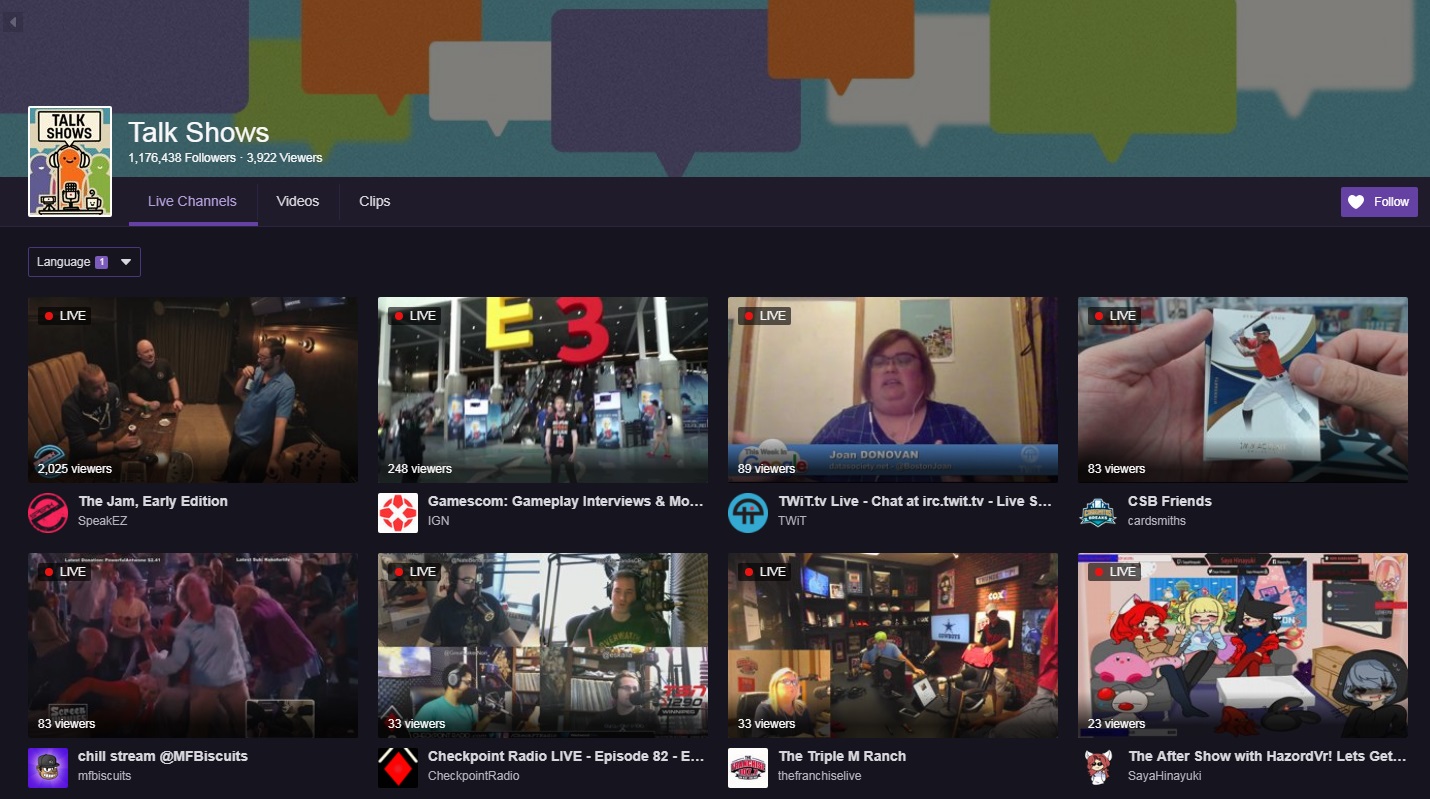
Webinars and live streaming gain the same benefits as video marketing. You tap sight, sound, and graphics, creating a stronger emotional connection. Plus, you’re sharing great tips helping to grow your brand and authority with the community.
6. Partnerships
Partnerships are especially powerful when teaming with an affiliated brand.
These partnerships could include:
- Branded landing pages
- Email newsletter feature
- Joint Venture opportunities
You’re teaming with fellow content creators, affiliate marketers, and business professionals to push a promotion. This leverages their authority and community, further driving more people to the promo.
Partnerships also benefit in ways like:
- Building authority by association
- Having people to interview and contribute content
- Showing positive social signals and verification
Don’t see your competitors as competitors – work with them, too. There’s enough of a market to go around, and sometimes it’s beneficial working together toward a common goal.
See: How to Create a Business Mastermind Group
Try reaching your community, influencers, and opportunities:
- Send a friendly email to a business asking about partnership opportunities
- Work with social media influencers on branded content creation and distribution
- Partner with fellow affiliates in creating a big project like a multi-author website
These partnerships could include your community by way of user content. Invite community members to create content for your blog, giving them the spotlight. This creates more content to be indexed while building a stronger community.
7. Product Launches
Product launches can create incredible affiliate revenue because of its excitement and hype. Sometimes, this is also called “launch jacking” where you’re picking up interest surrounding the launch but weren’t necessarily part of the primary JV or partnership opportunities.
Why product launches are awesome:
- It gets lots of affiliates working together in spreading the message
- There are bonuses and contests (usually) letting you earn more
- The initial hype can drive crazy amounts of leads to the affiliated product
- Search listings haven’t yet settled letting you get in early with Google placement
These product launches happen when you’ve built a strong affiliate business network. They’re usually formed within a smaller group of affiliates and product creators.

Sometimes you can find these openly available by doing a search like “(Your Niche) + JV”. There, you’ll find a landing page sharing the details and where to sign up. Or, you could join an FB group dedicated to these JV opportunities.
On the general side:
You can find many new product launches from the newsletters shared by affiliate managers. Big brands are constantly launching new products. Keep attuned to these release schedules and you can get an early footing on its promotion!
8. Advertising Campaigns
Those affiliate marketers willing to spend money can leverage paid advertising campaigns to drive leads to their affiliate product promotions.
There are many ways to launch ad campaigns:
- Pay-per-click
- Cost-per-action
- Sponsored Content
- Independent Ads
- Featured Newsletters
Pay-per-click advertising is usually the most popular. You’ll want to explore Google Ads, Facebook Ads, and Bing Ads if you’re doing PPC. These provide the necessary tools to target an audience, build an ad using a visual editor, fund it, and begin running the promotion.
Here are the basics of PPC:
- Search for relevant (buyer) keywords
- Create ad copy using enticing hooks, promises, or stats
- Add an attractive image to draw attention
- Fund the ad set to your acceptable budget
- Run the ad, test results, and improve the copy/image
Others we recommend include sponsored content in which you pay to get featured in a blog post. This is quite handy for building backlinks while exposing your brand to a new audience. Independent ads found through BuySellAds is about the same minus the content. You’ll find this with email newsletters, too.
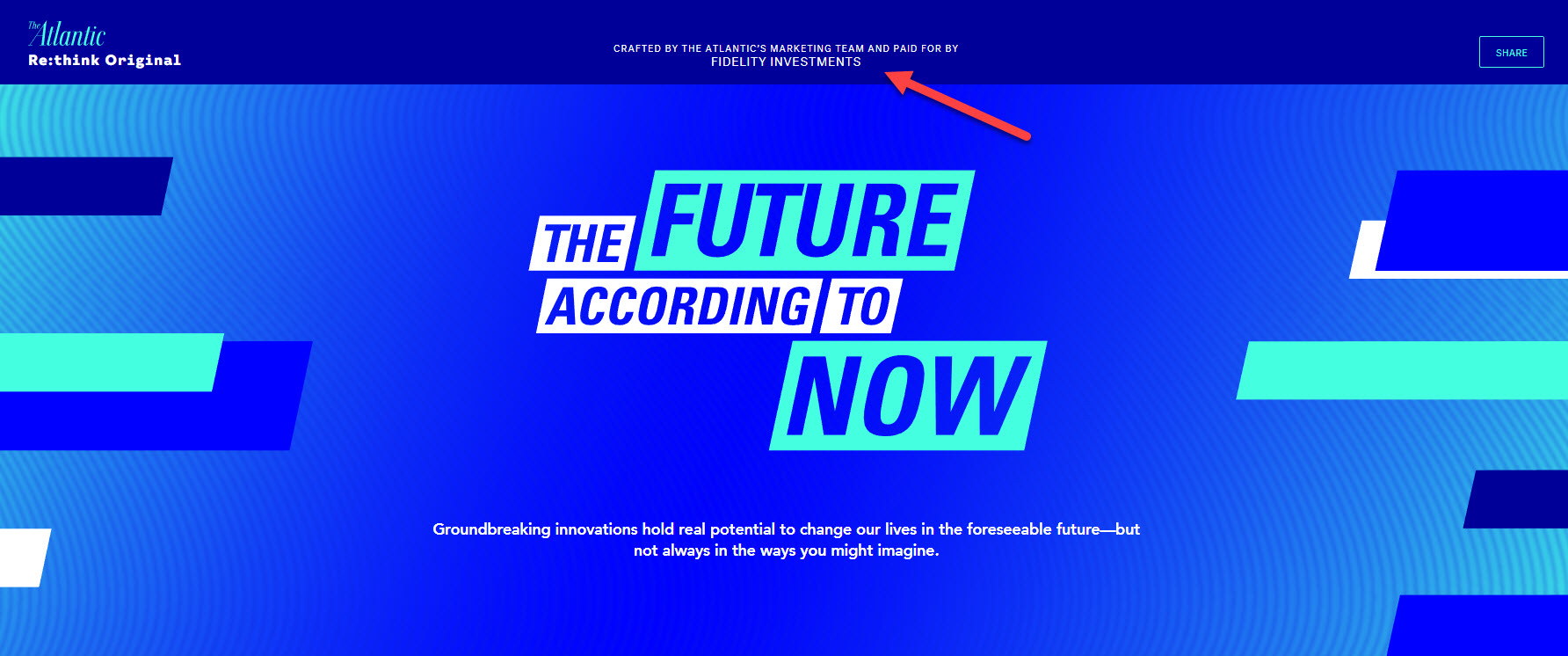
We recommend running several, small-scale advertising campaigns before dumping money into a larger one. This lets you A/B test everything so you’re not wasting money.
You send people to a targeted landing page as part of the ad campaign.
This landing page should include:
- A strong headline to catch their attention
- A powerful hook to draw them in
- A set of promises of what value they gain
- An overview of the product, features, and benefits
- A group of testimonials and prior client feedback
- A strong call-to-action enticing them to buy the product
This product page is promoting the affiliate product – surprise, surprise!
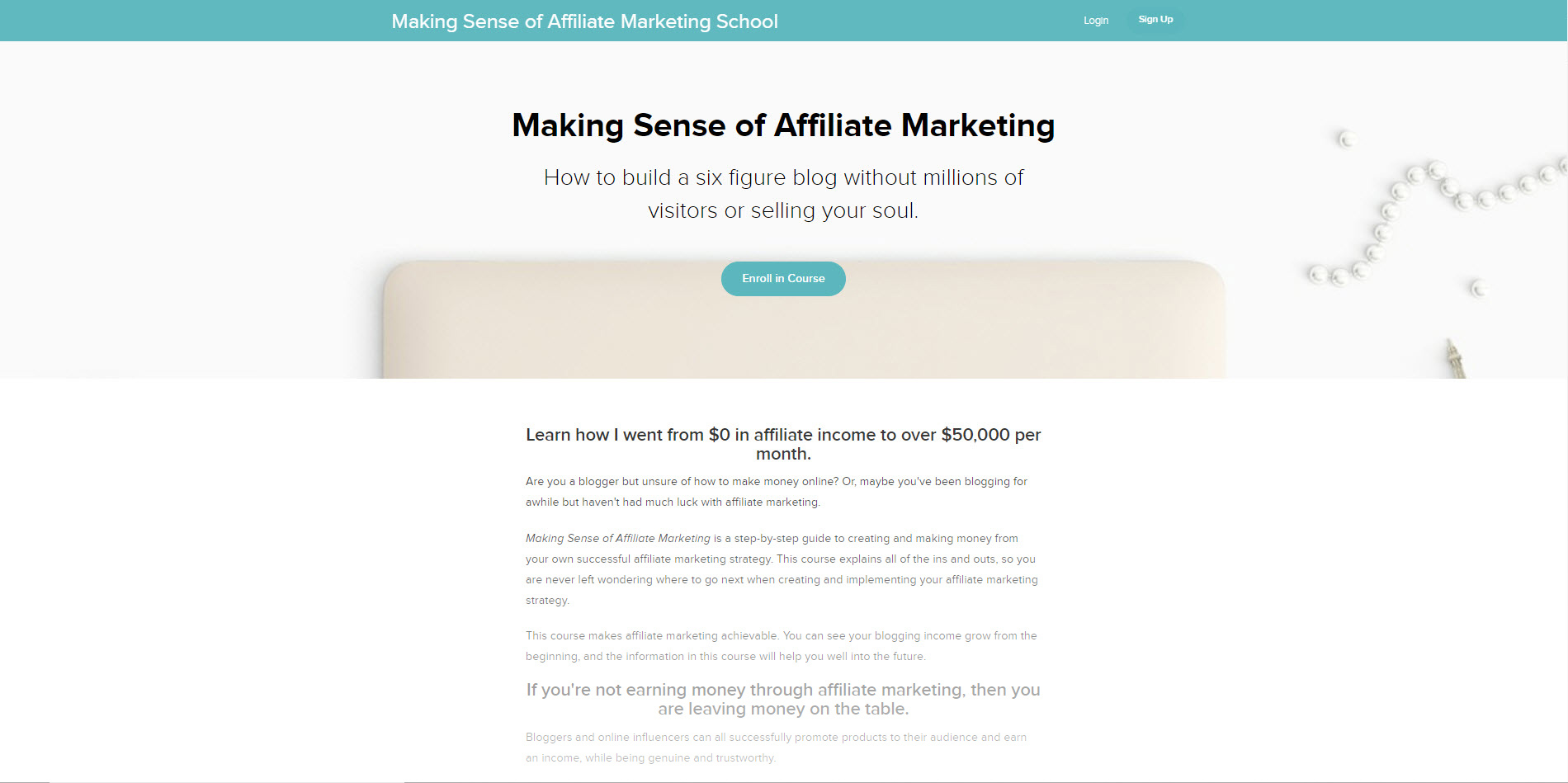
You could also point people to a review or tutorial. These are effective since you’ve created and refined them prior to building a brand-new landing page just for the campaign.
Which Affiliate Marketing Strategy is Best?
That all depends on:
- What you’re promoting
- Who you’re promoting to
Some audiences are more attuned to product features (logical buyers). Others will follow along like it’s a gripping story, looking at the benefits (emotional buyers). Pull site/social data and feedback to see which visitor type you’re attracting to best match the affiliate promotion.
However:
Product reviews are our favorite because:
- It provides new entry points for search engine users
- It gives you something to share on social media
And, is continually refined over the years if the product remains a hot commodity. You can do yearly updates including new features and benefits as the offer grows in popularity.
The rest of the affiliate marketing strategies are like a bonus to this central effort. But, should become part of your over-arching strategy anyway.




